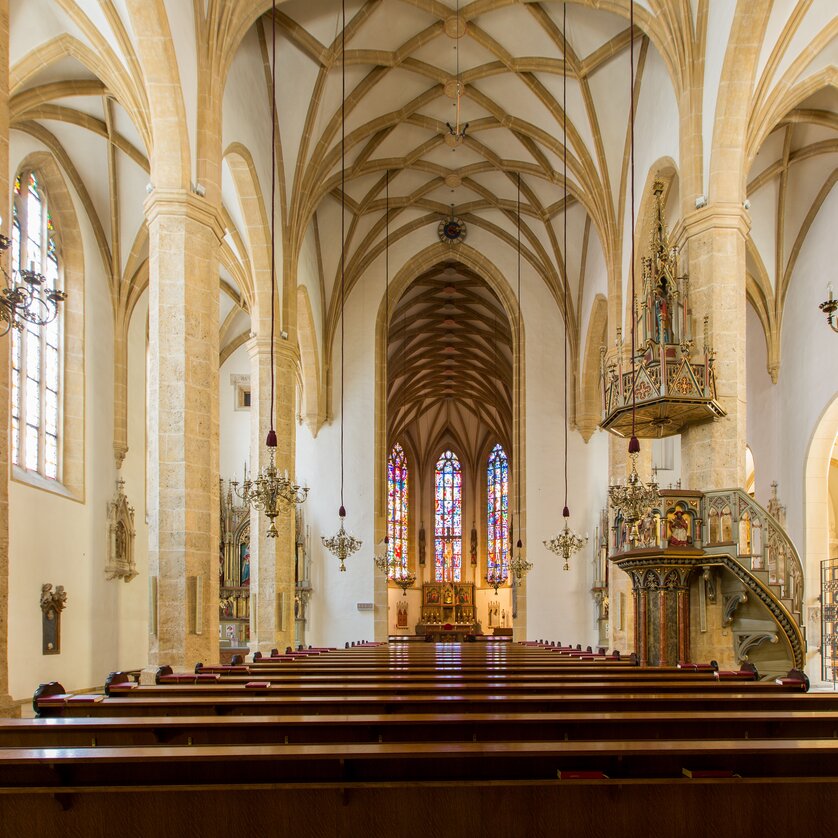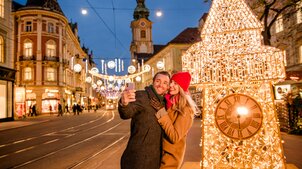City Parish Church
You experience more than a customary visit to the house of God when you enter the Stadtpfarrkirche church in Graz. This sacred place has a very interesting history, reflected in aspects originating from various epochs including the Gothic, Baroque and modern eras. But wait, just who are those two familiar faces in the stained glass behind the altar? At this church steeped in history, there’s something of a surprise in store in the depiction of the torment of Christ.

Details
You experience more than a customary visit to the house of God when you enter the Stadtpfarrkirche church in Graz. This sacred place has a very interesting history, reflected in aspects originating from various epochs including the Gothic, Baroque and modern eras. But wait, just who are those two familiar faces in the stained glass behind the altar? At this church steeped in history, there’s something of a surprise in store in the depiction of the torment of Christ.
It was in the year 1440 that Emperor Frederick III had a little Corpus Christi chapel erected in the former Jewish quarter of Graz. The Dominicans, to whom the chapel had been turned over by Frederick, added a three-nave late Gothic church with a long, narrow chancel. Gothic architecture and the former cloister in the south with its partly preserved ribbed vault even today remind of the Dominican period in the history of the building. But the Dominicans themselves had to leave their monastery. In 1585 the church was made the municipal parish church by order of Archduke Charles II. The former parish church, today's cathedral, had been turned over to the Jesuits.
The gorgeous altars from the Baroque period were replaced by neo-Gothic ones in the 19th century. The Baroque Johannes Nepomuk Chapel, however, has been preserved. It was erected by Josef Hueber on an oval ground plan, and today contains the former altarpiece of the high altar "Mariae Himmelfahrt" ascribed to the Venice painter Tintoretto.
A bomb explosion in Word War II destroyed, among other things, the Gothic stained-glass windows in the chancel. Albert Birkle, an artist from Salzburg, was commissioned with making new ones. They predominantly depict the Passion but also the Resurrection of Jesus Christ.
The organ of Stadtpfarrkirche is among the best in Styria. It was built in 1970 by the company Rieger from Vorarlberg. You can hear the organ play at services, at organ concerts and in summer as "Mittagsklänge" (sounds at noon) inviting to a pause in the rush of the city.
Coming back to the tower: what seems to be so solid is just a wooden roof turret, richly decorated with stucco and a splendid copper cupola. The eyecatcher in Herrengasse was designed by Joseph Stengg and built around 1780.
By the way: The new stained-glass windows by Albert Birkle made headlines in the fifties. What was causing the stir? The faces of Hitler and Mussolini in the windows. But Birkle, whose works were regarded as "degenerated art" in the Nazi era, shows the two dictators side by side with Christ's tormentors.




